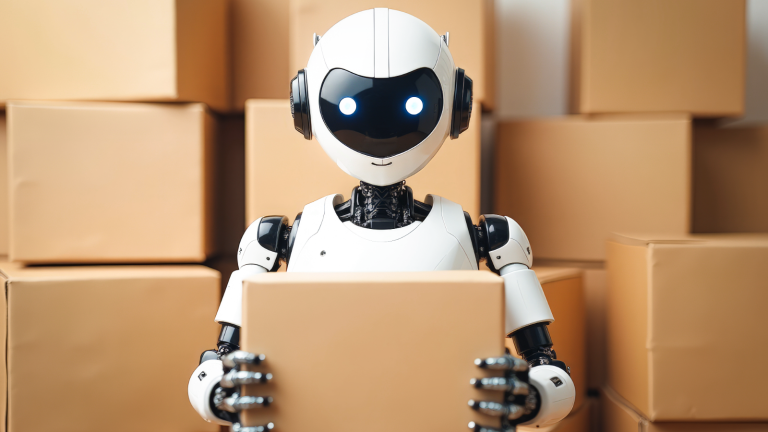Hello, Reader.
Attention, shoppers!
Yesterday, the world’s first robot store opened in Beijing, where customers can now add humanoid robotics to their metaphorical shopping carts.
The Robot Mall, as it is aptly named, showcases more than 50 robots across seven major categories: medical, manufacturing, companion, bionic, bipedal humanoid, integrated, and wheeled humanoid robots.
These robots include dogs, chess players, butlers, and even an Albert Einstein look-alike. Their prices range from 2,000 yuan ($278) to several million yuan.
This grand opening is China’s latest push to commercialize advanced robotics, an industry it is all-in on. The country has allocated over$20 billion in subsidies to its robotics sector over the past year.
But this isn’t a localized trend. It’s growing worldwide.
According to Markets Research Future, the global robotics market will quadruple between now and 2032 – from $74 billion to $287 billion. That is a robust compound annual growth rate of 18.4%.
This shift toward “Physical AI” will reshape entire industries, from logistics and retail to agriculture and construction. And that includes the workforce.
So, in today’s Smart Money, let’s take a look at one tech giant where AI-powered robotics is already making major payroll waves stateside.
Then, I’ll share how you can capitalize on the exponential robotics growth still in front of us.
Let’s dive in…
What Is Possible Today… and Will Be Possible Soon
Just like it was with the e-commerce and the cloud, Amazon.com Inc. (AMZN) is at the vanguard of what’s possible in robotics today…
As well as what will be possible, very soon.
In June, Amazonannounced that its robotic “workforce” now totals more than 1 million. Amazon started deploying robots to move inventory shelves across warehouse floors back in 2012. Since then, the company has developed fully autonomous robots that can navigate customers’ carts around its warehouse floors.
Right now, these million robots basically look like either mechanical arms or Roombas, the robot vacuum cleaners, running around the factory. They handle tasks like moving inventory, transporting packages, and assisting with picking and sorting.

Amazon’s warehouse robots reduce the need for human labor in repetitive, physically demanding tasks. This will lead toward the rise of “dark factories,” or manufacturing facilities that don’t need lights… because they don’t need humans.
Amazon’s newest fulfillment centers are designed from the ground up for total robotic efficiency. Humans still check in occasionally, but the heavy lifting is all automated now.
But that’s not all…
In San Francisco, Amazon has built a dedicated robotics test facility, or what it calls a “humanoid park.” Here, they’re training a bipedal robot called Digit to move packages and navigate warehouse environments.

This robot park also has an electric Rivian delivery van, plus obstacles, stairs, and other challenges the robots will need to overcome. The goal is to train the robots to hop out of a driverless electric van and bring your packages right to your door… no humans.
The stated goal is simple: Fewer humans per package. More packages delivered. Lower cost. It’s essentially the Amazon supply chain 2.0.
Now, as longtime Smart Money readers know, I’ve been vocal about avoiding high-value companies, especially the likes of Amazon.
But it can’t be denied that the tech giant is integral to reaching AI’s Day Zero, which is when the technology steps off the screen and starts reshaping the physical world, including the workforce.
AI’s Day Zero will undoubtedly have repercussions on the job market, and this can be frightening.
That’s why it is important to note that it will also reward those who get in position early.
Here’s why… and how to do so.
The Robotics Boom Is Set to Multiply
AI’s Day Zero could spark a new $20 trillion economic wave, barreling straight into AI and robotics.
You see, every major technology wave ends up creating at least 3X more value than the one before it. It’s called the Tech Rule of Three.
The personal computer wave created the first big leap. Then the internet came along, which generated more than 3.5X the value of the PC era.
Then mobile, which saw 3X the gain of the internet wave. Same thing with cloud computing: It tripled mobile.
If Physical AI follows the same trajectory – which we believe it will – we’re looking at a value creation curve that could hit $20 trillion or more.
So, the Tech Rule of Three tells us this isn’t just a repeat of the last boom…
It’s a multiplier.
That’s why I just teamed up with InvestorPlace Senior Analysts Luke Lango and Louis Navellier to identify a group of seven new AI recommendations set to capitalize on the growing world of robotics and Physical AI.
Some are leaders in robotics and automation… some are building the platforms other machines run on… and some are under-the-radar plays most investors have never even heard of.
We’ve put all of this information in our new special report: The Day Zero Portfolio: 7 Stocks Powering the $20 Trillion Physical AI Boom.
You can learn how to access this report in our brand-new, special broadcast.
We also give away our No. 1 stock set to potentially profit from AI’s Day Zero, for free.
This broadcast will only be available for a limited time, so click here to check it out now.
Regards,
Eric Fry
Editor, Smart Money

